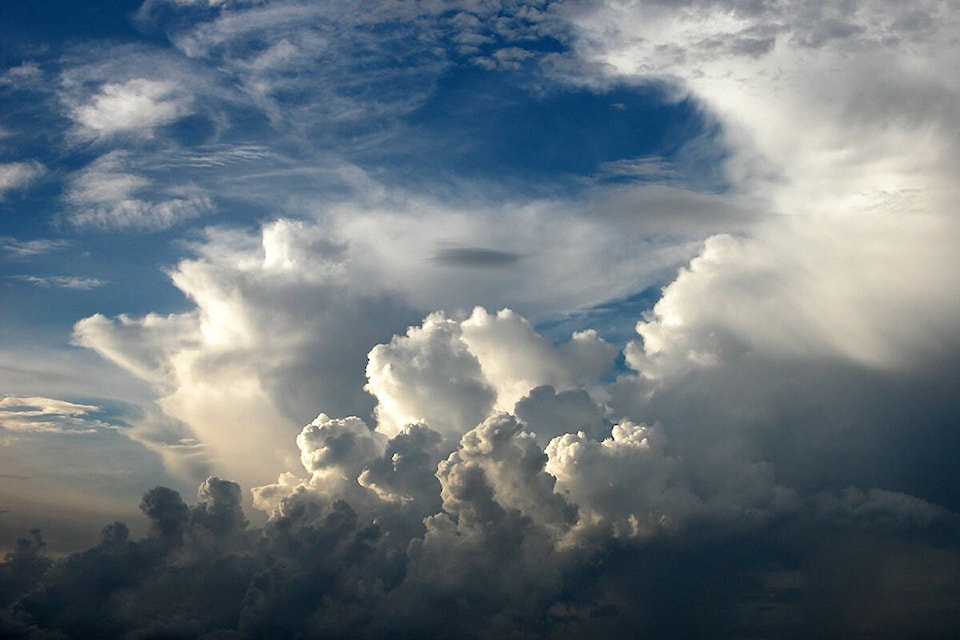Weather in the Yukon has been exceptional in recent weeks, but for very different reasons depending on what part of the territory you’re standing in.
According to statistics tracked by Environment Canada, Whitehorse had one of its warmest and driest Mays on record, while the central and northern parts of the territory saw plenty of moisture.
Environment Canada meteorologist Bobby Sekhon said the territory’s capital is coming out of the second-driest May since record-keeping began in 1941. It was also an exceptionally dry month, with only 1.7 millimetres of precipitation recorded compared to the 16.3 millimetres that is normal for the month. This is the second driest May since records were first kept in 1941. It was also the 15th warmest on recond.
The driest May on record for Whitehorse was in 1971, with only 0.8 mm of precipitation recorded.
Last month, Whitehorse also saw three consecutive days of daily maximum temperature records. May 17, 18 and 19 all had the warmest maximum temperatures recorded for those dates. May 17 had a temperature of 26.3 C, the following day it reached 24.4 C and on May 19 it reached 23.4 C. The previous extremes had all been set in 2015.
It was dry across the south of the territory. While not as dry as Whitehorse, Watson Lake received 23 per cent of the normal precipitation for the month.
Sekhon said the dry trend was localized only to the southern reaches of the territory, while the central and northern portions of the Yukon saw conditions near the opposite extreme. He said Mayo experienced its second-wettest May, while in Dawson, it was the fifth-wettest recorded. More than twice the average amount of precipitation fell on Mayo last month, and Dawson also exceeded its average by a considerable margin.
The meteorologist said the notable precipitation difference was driven by weather systems that moved across the central Yukon. A few instances like this were enough to drive up the monthly average.
The dry conditions were not to persist as Environment Canada issued a special weather statement for June 5 and 6 calling for rainy conditions in the southern portion of the territory to the point they could result in hazards on the roads and near bodies of water. The weather statement called for as much as 20 to 50 millimetres of rainfall in a two-day period driven by a cold low-pressure system that stalled over northern B.C., possibly eclipsing the average precipitation for the month of June in some areas within the first week of the month. It also warned of hazards, including the risk of landslides and road washouts due to rain and rising river and lake levels.
Sekhon noted that the June average precipitation for Whitehorse is only about 32 millimetres, so rain making up a big part of the monthly average over the course of a few days is a possibility.
“Luckily, we’re getting this precipitation in what was previously the drier part of the territory, which is in the south. And so it’s mainly, you know, Whitehorse to Watson Lake kind of stretch, whereas, in Dawson or Mayo, we’re not seeing much precipitation. We might get a few millimetres tonight in Mayo, but we’re not looking at copious amounts of rain by any means,” Sekhon said on June 5.
Sekhon predicted that the low-pressure system was bound for the Northwest Territories and that Teslin would see the most rain of the southern Yukon communities as it passed over. In Teslin, 28.2 millimetres of rain was recorded on June 5, with an additional 10.1 millimetres the following day. Whitehorse saw only 1.3 millimetres of rain on June 5, but heavy showers in the early morning hours of Tuesday drove the daily total to 19.9 millimetres.
Contact Jim Elliot at jim.elliot@yukon-news.com
Note: Due to a miscomunication with the Environment Canada meteorologist interviewed, the original version of this article stated that Whitehorse had experienced its second warmest May on record. In fact, it was the second driest May but only the 15th warmest.
